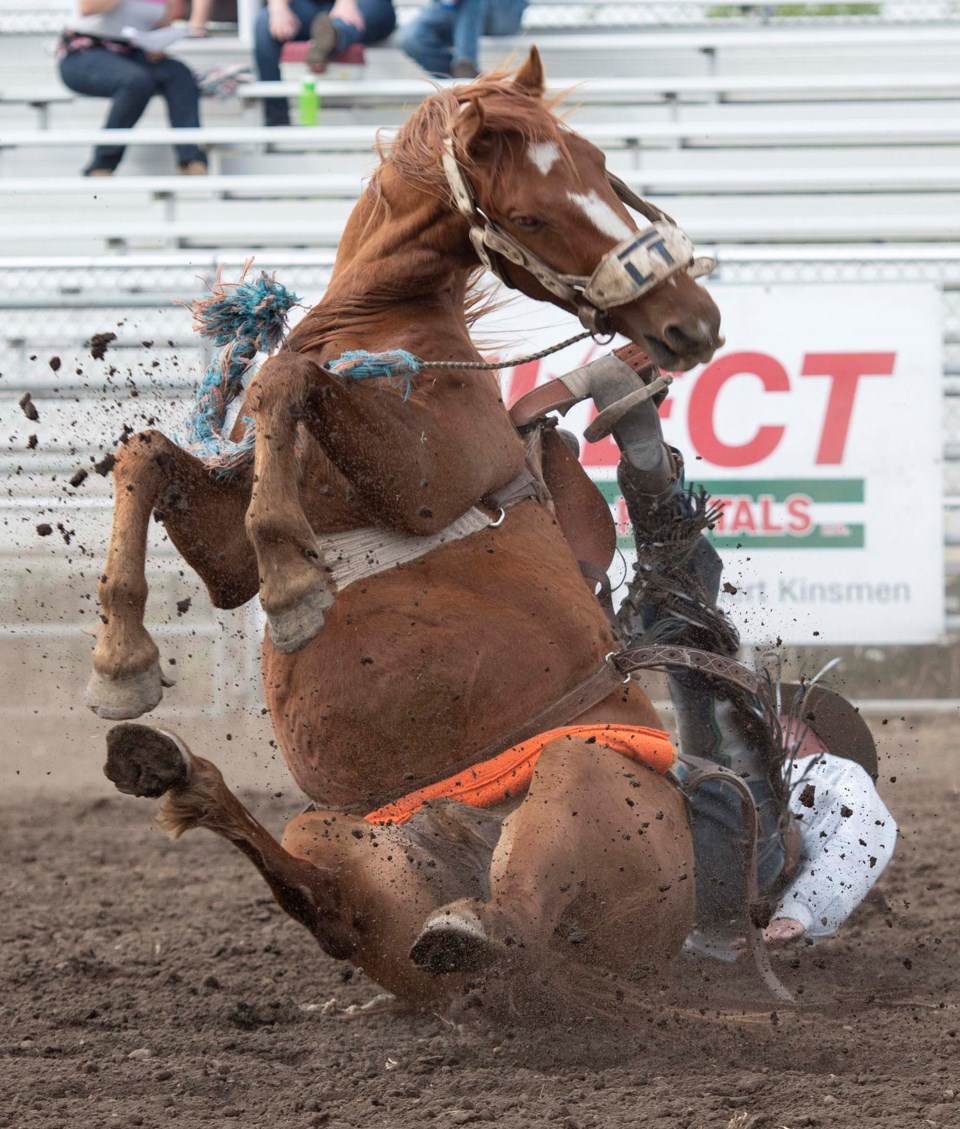With all the bucking broncos, raging bulls, and high-speed horses involved, it’s no surprise that animals sometimes get hurt at a rodeo. Although at the St. Albert Rainmaker, there have not been any serious injuries to animals in recent history.
The Vancouver Humane Society reports that some 105 animals have died at the Calgary Stampede since 1986, for example, with 75 of those being chuckwagon horses.
About 60 bulls, horses, and other animals will be performing at this year’s Rainmaker Festival, and rodeo staff are going to great lengths to keep them safe, said rodeo infield director Dave Bergsma.
“We put safety before anything else,” he said, adding that there have not been any serious animal injuries at the Rainmaker in the 12 years he has been with the event.
Chief amongst these safety measures is Tammy Nay of the Onoway Veterinary Clinic, who has been the on-site veterinarian for the Rainmaker for 18 years.
“We rarely see injuries to the animals,” she said in an email interview, adding that she could recall just one time when she had to treat an animal at the Rainmaker for a performance-related injury (a horse got a cut during a chuckwagon race — an event that hasn’t been held at the Rainmaker for more than a decade).
“The livestock contractor, contestants, veterinarian, judge, and rodeo director all have the health and safety of the animals as their priority.”
Sport safety
Rodeo does involve risk, although most of it is toward the humans, Bergsma said. Contestants can be trampled or tossed by horses and cows, and often have little more than a protective vest for safety gear.
“These animals are pretty tough,” he said, and are very fit from farm life.
The rodeo part of the Rainmaker is regulated by the Lakeland Rodeo Association, which has a long list of rules related to animal safety.
Rodeo officials must have a veterinarian on-call at all times during the event, and must suspend all activities if more than one horse falls due to poor ground conditions, the regulations state. Stimulants, hypnotics, excessive whipping, and sharp objects in flank straps are banned, with contestants subject to fines and/or disqualification for any mistreatment of rodeo livestock.
Horses in a rodeo can suffer cuts, bruises, strains, sprains, and other soft tissue injuries, Nay said. They can also get kicked by other horses or charged by bulls. Steers can suffer rope burn during roping events.
“The worst-case scenario for any of the competing animals is a fractured leg, but these are incredibly rare,” she said.
Nay and Bergsma said a livestock manager monitors the health of each animal during the rodeo. If an animal looks sick or injured, it’s not allowed to compete.
Nay said rodeo crews use padded chutes, experienced staff, and blunted or removed horns to prevent injuries from bucks, kicks, and charges. For roping events, calves will have their horns wrapped to reduce rope burn, with some events using “breakaway” ropes that snap off a competitor’s saddle instead of tightening around the calf’s neck.
Animals typically only have to work for about five minutes at the Rainmaker before heading back to a big pen stocked with fresh oats, hay, and water, Bergsma said.
“It’s a pretty easy gig for most of them,” he said.
Nay said rodeo animals are specifically bred and trained for the sport, with competitors and stock contractors spending a lot of time and money to ensure their animals are ready to compete.
“Most live, eat, and travel in better trailers than a human would,” she said, with some horses getting massages, acupuncture, and chiropractic treatment.
“These animals are treated very well. In my opinion, this is not mean or cruel.”




